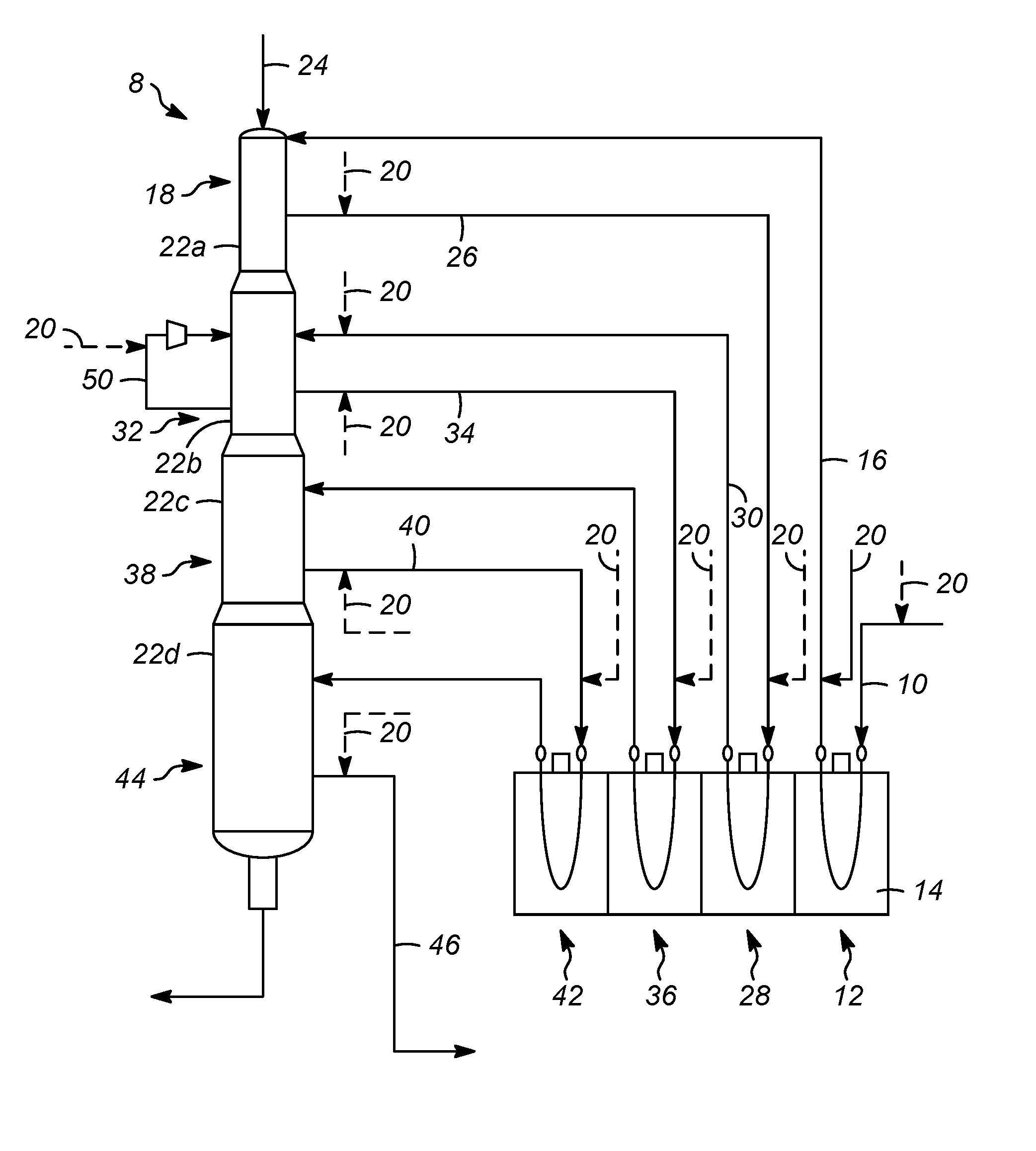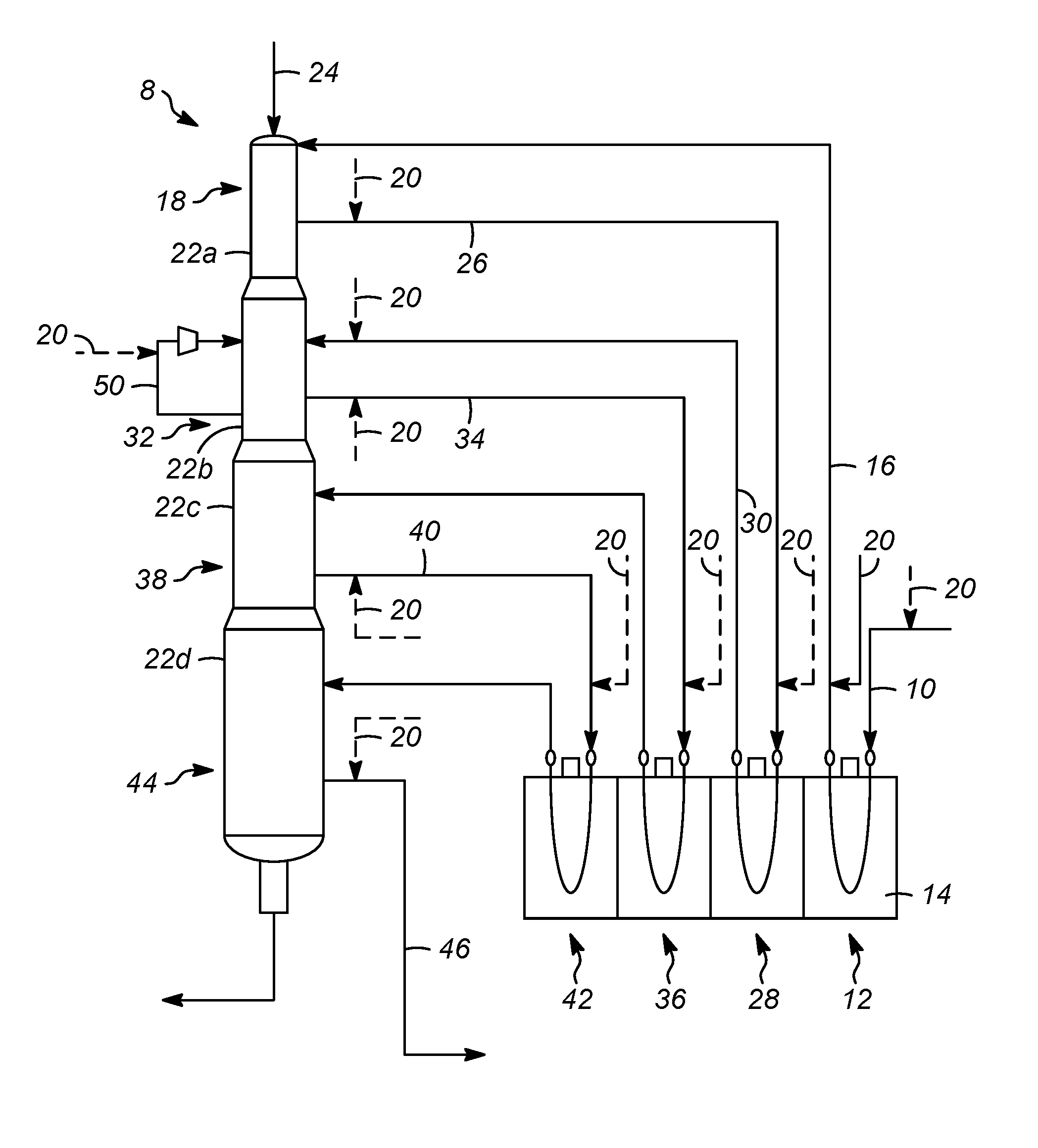Catalytic reforming processes
a technology of catalytic reforming and process, applied in the field of aromatic compound production, can solve the problems of significant cost increase, process operation at a lower temperature, and limit the methods and catalysts, so as to reduce the amount of thermal cracking and minimize the effect of yield loss
- Summary
- Abstract
- Description
- Claims
- Application Information
AI Technical Summary
Benefits of technology
Problems solved by technology
Method used
Image
Examples
Embodiment Construction
[0026]As mentioned above, one or more processes have been invented to reduce the amount of thermal cracking associated with a catalytic reformer unit. Thermal cracking of hydrocarbons proceeds through a unimolecular reaction in which a hydrogen is abstracted from the hydrocarbon to produce a radical species, followed by carbon-carbon bond breaking in the position beta to the formed radical. The primary factors influencing the thermal cracking rate, and thus yield loss, are temperature and residence time at elevated temperatures. The cracking rate is also a function of the molecule's carbon number, as well as attached functional groups such branches, double bonds, and phenyl groups. It is believed that olefins, preferably light olefins may be used as a thermal cracking inhibitor in the catalytic reformer unit.
[0027]This inhibition of thermal cracking is due to the ability of, for example, propylene to form a stable radical species. The formed allylic radical is stabilized by the pres...
PUM
 Login to View More
Login to View More Abstract
Description
Claims
Application Information
 Login to View More
Login to View More - R&D
- Intellectual Property
- Life Sciences
- Materials
- Tech Scout
- Unparalleled Data Quality
- Higher Quality Content
- 60% Fewer Hallucinations
Browse by: Latest US Patents, China's latest patents, Technical Efficacy Thesaurus, Application Domain, Technology Topic, Popular Technical Reports.
© 2025 PatSnap. All rights reserved.Legal|Privacy policy|Modern Slavery Act Transparency Statement|Sitemap|About US| Contact US: help@patsnap.com


